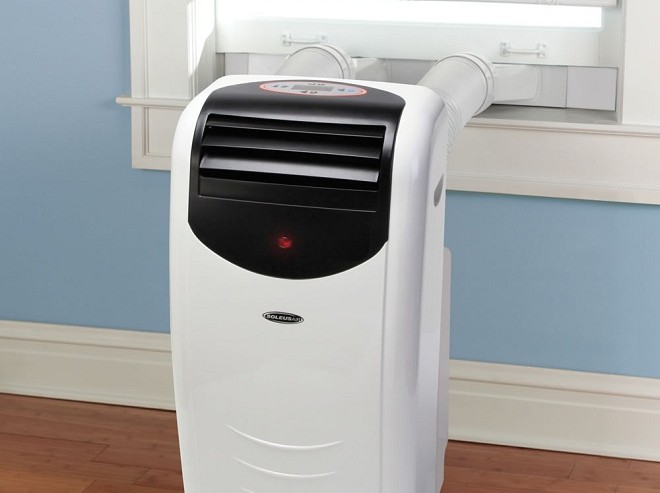Different Types of Air Conditioners, Part II
In the first part of this blog, we looked at air conditioners that would cool a single room. But, these types of air conditioners were ineffective when trying to cool a larger area.
Central air conditioning systems are able to cool an entire home using existing infrastructure to do so. Let’s take a look at two of the most common types of central air, as well as portable air conditioning systems.
Central Systems
Unlike window units, central air conditioning units are made up of two parts. One is located inside of the house, and the other located outside of the home. These units work in conjunction to cool your house. In many cases, the internal part of the unit is also shared with the furnace for use during the cooler parts of the year.
Central air systems offer several advantages. Since the large compressor unit and fan is outside, they are much quieter than window or wall units. They are typically more efficient than smaller units as well, since their large size allows for very efficient cooling of the air that is being circulated.
Where central air systems may fall flat is the fact that they are typically controlled by a central thermostat. This means you may have rooms in the home, especially on higher levels, that are much warmer than the rooms with the thermostat.
Ductless or Mini-Split Systems
Ductless systems have a medium-sized compressor/condenser unit located outside that pumps the liquid refrigerant throughout the house. The refrigerant reaches individual room evaporator/fan units that blow cool air throughout the room. These individual units can be installed on walls, on the floor or even on the ceiling to achieve the desired effect. They can be controlled by a central thermostat, or they may have individual thermostats per-room to shut on or off each unit at a time.
Like “unitary” systems such as window or portable units, the air intake and filtration are often done by each interior unit separately.
Since each room has its own blower unit and fan, this means that these units can be individually controlled in each room, allowing for much more flexibility of temperature. They are much more efficient than wall or window mounts, but can be less efficient than central air, depending on how you choose to set your temperatures.
Portable Units
While portable air conditioners don’t really fit into central air category, they are worth mentioning in this article for several reasons. Much like a space heater in the winter, they can be used to supplement central air units for rooms where they are not getting the job done.
These setups are also functionally similar to a window unit. All parts of the air conditioner are kept in one small case. Their heat must somehow be exhausted outside to remain efficient. This task is sometimes done with a single exhaust pipe, but pulling out hot air creates lower pressure and invites the hot air to come back in from other parts of the house. Two vents are sometimes used to solve this problem, letting one bring in outside air to help cool the compressor/condenser and keep the interior air pressure stable.
Now that we’ve looked at the different kinds of air conditioners, the final part of this three-part blog will examine what system is best for your home. Whatever kind of air conditioner unit you go with, Service Whale can help you get it installed. We will connect you with the best HVAC contractors in your area so you know you are getting the best service possible.
Are you in the market for a new heating and air conditioning system? Click here to get free custom quotes from reputable HVAC contractors. You’ll receive upfront pricing without having to invite a contractor to your home or even enter your contact information!
Related articles
Different Types of Air Conditioners, Part III
The History of Heating and Cooling
What are the Different Types of Heating Systems?





Comments
Comments are disabled for this post